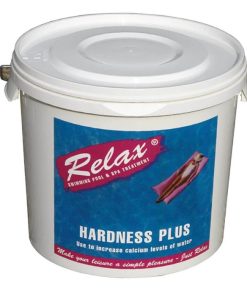-
×
 Plastica 5kg Relax Hardness Plus
Plastica 5kg Relax Hardness Plus
- Current order processing time:
1 days
1 ×£44.33£35.46
Subtotal: £35.46
Location is key! Consider these factors:
Proximity to the house: Is a convenient access point important to you or would you prefer it located further away?
Path to the hot tub: The path should have a non-slip material to prevent dirt and contaminants from getting into the water.
Overhead obstructions: Power lines and trees should be avoided because they create debris issues.
Privacy: Privacy considerations should include screening or fencing when neighbors reside close by.
View: People who like to stargaze should pick a spot with no roof interference that lets them see the sky.
When installing hot tubs indoors you must think about ventilation systems and drainage mechanisms as well as overflow management and maintenance accessibility.
Hot tubs are extremely heavy and people need to handle them with extreme care. Reputable retailers should always provide their delivery and installation services because they possess the necessary experience together with tools and insurance to guarantee both safety and no damage. When you decide to handle the installation yourself you should follow these guidelines:
Measure carefully: Measure the hot tub from its side including the height of the trolley and its packaging dimensions.
Clear the path: The area needs clearing of any eaves or branches or fence sections that may obstruct the path.
Protect the ground: The area should be protected from damage by using scaffolding boards over sensitive ground surfaces including lawns or gravel.
Enlist help: Several people with physical strength are needed to help you place the hot tub onto the ground from its trolley position.
Consider a crane: If the hot tub cannot be accessed easily then work with professional crane operators to move it into position.
A hot tub foundation must be firm and level to bear its weight and water content and accommodate bathers without movement.
Concrete pad: A 4″ (100mm) deep reinforced concrete pad is the most common and recommended foundation.
Decking: Make sure that the structural base can handle the weight of the hot tub. Noise and vibration transmission must be considered in this installation.
Gravel: A thorough gravel compaction process will establish a stable foundation.
Hot tub electrical requirements need clarification for installation purposes.
Hot tub electrical installations need to follow specific strict regulations.
Dedicated circuit: The hot tub should receive its power supply from a dedicated fused spur which extends back to the consumer unit.
SWA cable: For cable connections use Steel Wired Armoured (SWA) cable.
RCD protection: Each circuit needs its own Residual Current Device (RCD) for protection.
Competent electrician: Electrical work needs a qualified electrician to perform it while following Part P of Building Regulations and obtain signatures.
Cloudy hot tub water typically stems from contaminants that bathers introduce into the water. To prevent and treat cloudy water:
Daily testing of sanitizer concentrations along with necessary level adjustments should be performed for chlorine and bromine sanitizers.
Regularly oxidise impurities: The hot tub requires a shock dose each week as well as following heavy usage to eliminate organic substances.
Regular cleaning of filters should include daily rinsing followed by monthly usage of filter cleaning products. Filter replacements need to occur every 12 months although rotating two sets of filters extends this duration to 24 months.
Use a clarifier: A clarifier works to unite small particles into groups which becomes simpler for the filter to remove them.
Hot tub foam originates from excessive water products and Total Dissolved Solids (TDS). To minimize foam:
Shower before use: Remove all products from your body including lotions deodorants and cosmetics.
Rinse bathing suits: Avoid washing them with detergents; rinse with clean water after each use.
Use quality chemicals: You should only use sanitizer products which come from well-known manufacturers that match the recommendations from the product manufacturer.
Weekly shock treatment: A weekly shock treatment helps break down TDS and organic matter.
Hot tub sanitation requires regular shock treatment because it protects both water hygiene and user safety. Shock treatment:
Removes biological waste: The sanitizer eliminates unfilterable contaminants which come from bathers.
Eradicates resistant bacteria: The regular sanitizer fails to eliminate bacteria which have become resistant to its action.
Reactivates sanitiser: This removes chloramines or bromamines which means the sanitiser can work properly again.
Hot tubs need to be shocked at least once a week but it is also recommended after heavy usage.
Hot tub parties are an excellent way to host gatherings but both safety and water cleanliness need to be kept at the forefront.
Soaking time should be limited to fifteen minutes: Tell your guests to get out after fifteen minutes.
Non-alcoholic drinks should be your first choice to keep guests hydrated. Water and other non-alcoholic drinks should be available to all guests.
Always watch over children whenever they are near or inside the hot tub.
To keep water quality clean avoid letting the hot tub get too crowded. Make sure to divide hot tub use into different periods when necessary.
Set some rules: Make sure to share guidelines with guests about showering before getting into the hot tub and no jumping in the hot tub and no using glass containers.
The process of water quality management should include regular testing of sanitizer and pH levels followed by adjustments after shifts.
Some products you might be interested in:

Please enter your details below to save your trolley for later. If you have any questions please leave your email address and we will provide a swift response.